1.3: Cultural Anthropology and the Other Subfields
- Last updated
- Save as PDF
- Page ID
- 56350
WHAT IS CULTURAL ANTHROPOLOGY?
The focus of this textbook is cultural anthropology, the largest of the subfields in the United States as measured by the number of people who graduate with PhDs each year.[2] Cultural anthropologists study the similarities and differences among living societies and cultural groups. Through immersive fieldwork, living and working with the people one is studying, cultural anthropologists suspend their own sense of what is “normal” in order to understand other people’s perspectives. Beyond describing another way of life, anthropologists ask broader questions about humankind: Are human emotions universal or culturally specific? Does globalization make us all the same, or do people maintain cultural differences? For cultural anthropologists, no aspect of human life is outside their purview. They study art, religion, healing, natural disasters, and even pet cemeteries. While many anthropologists are at first intrigued by human diversity, they come to realize that people around the world share much in common.
Definition: cultural anthropology
The study of similarities and differences among living societies and cultural groups.
Cultural anthropologists often study social groups that differ from their own, based on the view that fresh insights are generated by an outsider trying to understand the insider point of view. For example, beginning in the 1960s Jean Briggs (1929-2016) immersed herself in the life of Inuit people in the central Canadian arctic territory of Nunavut. She arrived knowing only a few words of their language, but ready to brave sub-zero temperatures to learn about this remote, rarely studied group of people. In her most famous book, Never in Anger: Portrait of an Eskimo Family (1970), she argued that anger and strong negative emotions are not expressed among families that live together in small iglus amid harsh environmental conditions for much of the year. In contrast to scholars who see anger as an innate emotion, Briggs’ research shows that all human emotions develop through culturally specific child-rearing practices that foster some emotions and not others.
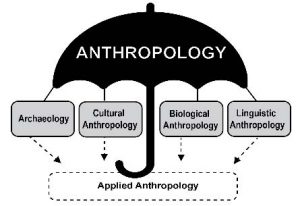
While cultural anthropologists traditionally conduct fieldwork in faraway places, they are increasingly turning their gaze inward to observe their own societies or subgroups within them. For instance, in the 1980s, American anthropologist Philippe Bourgois sought to understand why pockets of extreme poverty persist amid the wealth and overall high quality of life in the United States. To answer this question, he lived with Puerto Rican crack dealers in East Harlem, New York. He contextualized their experiences both historically in terms of their Puerto Rican roots and migration to the U.S. and in the present as they experienced social marginalization and institutional racism. Rather than blame the crack dealers for their poor choices or blame our society for perpetuating inequality, he argued that both individual choices and social structures can trap people in the overlapping worlds of drugs and poverty (Bourgois 2003).
THE (OTHER) SUBFIELDS OF ANTHROPOLOGY
Biological Anthropology
Biological anthropology is the study of human origins, evolution, and variation. Some biological anthropologists focus on our closest living relatives, monkeys and apes. They examine the biological and behavioral similarities and differences between nonhuman primates and human primates (us!). For example, Jane Goodall has devoted her life to studying wild chimpanzees (Goodall 1996). When she began her research in Tanzania in the 1960s, Goodall challenged widely held assumptions about the inherent differences between humans and apes. At the time, it was assumed that monkeys and apes lacked the social and emotional traits that made human beings such exceptional creatures. However, Goodall discovered that, like humans, chimpanzees also make tools, socialize their young, have intense emotional lives, and form strong maternal-infant bonds. Her work highlights the value of field-based research in natural settings that can help us understand the complex lives of nonhuman primates.
Definition: biological anthropology
The study of human origins, evolution, and variation.
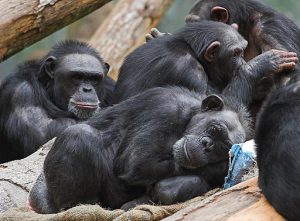
Other biological anthropologists focus on extinct human species, asking questions like: What did our ancestors look like? What did they eat? When did they start to speak? How did they adapt to new environments? In 2013, a team of women scientists excavated a trove of fossilized bones in the Dinaledi Chamber of the Rising Star Cave system in South Africa. The bones turned out to belong to a previously unknown hominin species that was later named Homonaledi. With over 1,550 specimens from at least fifteen individuals, the site is the largest collection of a single hominin species found in Africa (Berger, 2015). Researchers are still working to determine how the bones were left in the deep, hard to access cave and whether or not they were deliberately placed there. They also want to know what Homo naledi ate, if this species made and used tools, and how they are related to other Homo species. Biological anthropologists who study ancient human relatives are called paleoanthropologists. The field of paleoanthropology changes rapidly as fossil discoveries and refined dating techniques offer new clues into our past.
Definition: hominin
Humans (Homo sapiens) and their close relatives and immediate ancestors.
Definition: paleoanthropologists
Biological anthropologists who study ancient human relatives.
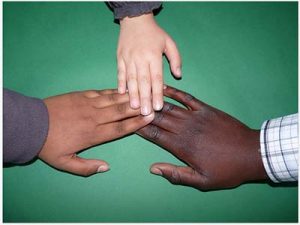
Other biological anthropologists focus on humans in the present including their genetic and phenotypic (observable) variation. For instance, Nina Jablonski has conducted research on human skin tone, asking why dark skin pigmentation is prevalent in places, like Central Africa, where there is high ultraviolet (UV) radiation from sunlight, while light skin pigmentation is prevalent in places, like Nordic countries, where there is low UV radiation. She explains this pattern in terms of the interplay between skin pigmentation, UV radiation, folic acid, and vitamin D. In brief, too much UV radiation can break down folic acid, which is essential to DNA and cell production. Dark skin helps block UV, thereby protecting the body’s folic acid reserves in high-UV contexts. Light skin evolved as humans migrated out of Africa to low-UV contexts, where dark skin would block too much UV radiation, compromising the body’s ability to absorb vitamin D from the sun. Vitamin D is essential to calcium absorption and a healthy skeleton. Jablonski’s research shows that the spectrum of skin pigmentation we see today evolved to balance UV exposure with the body’s need for vitamin D and folic acid (Jablonski 2012).
Archaeology
Archaeology focuses on the material past: the tools, food, pottery, art, shelters, seeds, and other objects left behind by people. Prehistoric archaeologists recover and analyze these materials to reconstruct the lifeways of past societies that lacked writing. They ask specific questions like: How did people in a particular area live? What did they eat? Why did their societies to change over time? They also ask general questions about humankind: When and why did humans first develop agriculture? How did cities first develop? How did prehistoric people interact with their neighbors?
Definition: archaeology
Reconstructs, describes, and interprets human behavior and cultural patterns through the recovery and analysis of material remains.
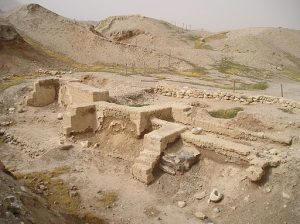
have helped unearth the foundations of ancient dwellings at Jericho.
The method that archaeologists use to answer their questions is excavation—the careful digging and removing of dirt and stones to uncover material remains while recording their context. Archaeological research spans millions of years from human origins to the present. For example, British archaeologist Kathleen Kenyon (1906-1978), was one of few female archaeologists in the 1940s. She famously studied the city structures and cemeteries of Jericho, an ancient city dating back to the Early Bronze Age (3,200 years before the present) located in what is today the West Bank. Based on her findings, she argued that Jericho is the oldest city in the world and has been continuously occupied by different groups for over 10,000 years (Kenyon 1979).
Historical archaeologists study recent societies using material remains to complement the written record. The Garbage Project, which began in the 1970s, is an example of a historic archaeological project based in Tucson, Arizona. It involves excavating a contemporary landfill as if it were a conventional archaeology site. Archaeologists have found discrepancies between what people say they throw out and what is actually in their trash. In fact, many landfills hold large amounts of paper products and construction debris (Rathje and Murphy 1992). This finding has practical implications for creating environmentally sustainable waste disposal practices.
In 1991, while working on an office building in New York City, construction workers came across human skeletons buried just 30 feet below the city streets. Archaeologists were called in to investigate. Upon further excavation, they discovered a six-acre burial ground, containing 15,000 skeletons of free and enslaved Africans who helped build the city during the colonial era. The “African Burial Ground,” which dates dating from 1630 to 1795, contains a trove of information about how free and enslaved Africans lived and died. The site is now a national monument where people can learn about the history of slavery in the U.S.[5]
Linguistic Anthropology
Language is a defining trait of human beings. While other animals have communication systems, only humans have complex, symbolic languages—over 6,000 of them! Human language makes it possible to teach and learn, to plan and think abstractly, to coordinate our efforts, and even to contemplate our own demise. Linguistic anthropologists ask questions like: How did language first emerge? How has it evolved and diversified over time? How has language helped us succeed as a species? How can language convey one’s social identity? How does language influence our views of the world? If you speak two or more languages, you may have experienced how language affects you. For example, in English, we say: “I love you.” But Spanish speakers use different terms—te amo, te adoro, te quiero, and so on—to convey different kinds of love: romantic love, platonic love, maternal love, etc. The Spanish language arguably expresses more nuanced views of love than the English language.
One intriguing line of linguistic anthropological research focuses on the relationship between language, thought, and culture. It may seem intuitive that our thoughts come first; after all, we like to say: “Think before you speak.” However, according to the Sapir-Whorf Hypothesis (also known as linguistic relativity), the language you speak allows you to think about some things and not others. When Benjamin Whorf (1897-1941) studied the Hopi language, he found not just word-level differences, but grammatical differences between Hopi and English. He wrote that Hopi has no grammatical tenses to convey the passage of time. Rather, the Hopi language indicates whether or not something has “manifested.” Whorf argued that English grammatical tenses (past, present, future) inspire a linear sense of time, while Hopi language, with its lack of tenses, inspires a cyclical experience of time (Whorf 1956). Some critics, like German-American linguist Ekkehart Malotki, refute Whorf’s theory, arguing that Hopi do have linguistic terms for time and that a linear sense of time is natural and perhaps universal. At the same time, Malotki recognized that English and Hopi tenses differ, albeit in ways less pronounced than Whorf proposed (Malotki 1983).
Other linguistic anthropologists track the emergence and diversification of languages, while others focus on language use in today’s social contexts. Still others explore how language is crucial to socialization: children learn their culture and social identity through language and nonverbal forms of communication (Ochs and Schieffelin 2012).
Applied Anthropology
Sometimes considered a fifth subdiscipline, applied anthropology involves the application of anthropological theories, methods, and findings to solve practical problems. Applied anthropologists are employed outside of academic settings, in both the public and private sectors, including business or consulting firms, advertising companies, city government, law enforcement, the medical field, non-governmental organizations, and even the military.
Applied anthropologists span the subfields. An applied archaeologist might work in cultural resource management to assess a potentially significant archaeological site unearthed during a construction project. An applied cultural anthropologist could work at a technology company that seeks to understand the human-technology interface in order to design better tools.
Definition: applied anthropology
The application of the anthropological data, perspectives, theory, and methods to identify, assess, and solve contemporary social problems (Kottak, 2011, p.12).
Medical anthropology is an example of both an applied and theoretical area of study that draws on all four subdisciplines to understand the interrelationship of health, illness, and culture. Rather than assume that disease resides only within the individual body, medical anthropologists explore the environmental, social, and cultural conditions that impact the experience of illness. For example, in some cultures, people believe illness is caused by an imbalance within the community. Therefore, a communal response, such as a healing ceremony, is necessary to restore both the health of the person and the group. This approach differs from the one used in mainstream U.S. healthcare, whereby people go to a doctor to find the biological cause of an illness and then take medicine to restore the individual body.
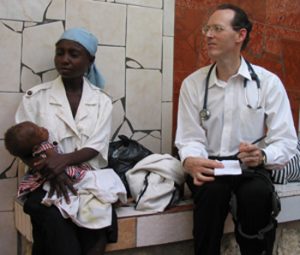
Trained as both a physician and medical anthropologist, Paul Farmer demonstrates the applied potential of anthropology. During his college years in North Carolina, Farmer’s interest in the Haitian migrants working on nearby farms inspired him to visit Haiti. There, he was struck by the poor living conditions and lack of health care facilities. Later, as a physician, he would return to Haiti to treat individuals suffering from diseases like tuberculosis and cholera that were rarely seen in the United States. As an anthropologist, he would contextualize the experiences of his Haitian patients in relation to the historical, social, and political forces that impact Haiti, the poorest country in the Western Hemisphere (Farmer 2006). Today, he not only writes academic books about human suffering, but he also takes action. Through the work of Partners in Health, a nonprofit organization that he co-founded, he has helped open health clinics in many resource-poor countries and trained local staff to administer care. In this way, he applies his medical and anthropological training to improve people’s lives.
BIBLIOGRAPHY
Berger, Lee R., Hawks, John, de Ruiter, Darryl J., Churchill, Steven E., Schmid, Peter, Delezene, Lucas K., Kivell, Tracy L., Garvin, Heather M., and Scott A. Williams. 2015. “Homo naledi, A New Species of the Genus Homo from the Dinaledi Chamber, South Africa.” eLife 4:e09560. doi: 10.7554/eLife.09560.
Bourgois, Philippe. In Search of Respect: Selling Crack in El Barrio. Cambridge: Cambridge University Press, 2003.
Briggs, Jean. Never in Anger: Portrait of an Eskimo Family. Cambridge: President and Fellows of Harvard College, 1970.
Farmer, Paul. AIDS and Accusation: Haiti and the Geography of Blame. Berkeley: University of California Press, 2006.
Goodall, Jane. My Life with the Chimpanzees. New York: Aladdin Paperbacks, 1996.
Jablonski, Nina. Living Color: The Biological and Social Meaning of Skin Color. Berkeley: University of California Press, 2012.
Kenyon, Kathleen. Excavations at Jericho – Volume II Tombs Excavated in 1955-8, London: British School of Archaeology, 1965.
Kottak, Conrad P. Mirror for Humanity: A Concise Introduction to Cultural Anthropology. New York: McGraw-Hill, 2011.
Malotki, Ekkehart. Hopi Time: A Linguistic Analysis of the Temporal Concepts in the Hopi Language. Trends in Linguistics. Studies and Monographs. 20. New York: Mouton Publishers, 1983.
Ochs, Elinor, and Bambi B. Schieffelin. 2012. “The Theory of Language Socialization.” In The Handbook of Language Socialization edited by Alessandro Duranti, Elinor Ochs, and Bambi Schieffelin, 1–21. Malden, MA: Wiley-Blackwell, 2012.
Rathje, William and Cullen Murphy. Rubbish: The Archaeology of Garbage. New York: HarperCollins Publishers, 1992.
Whorf, Benjamin Lee. Language, Thought, and Reality: Selected writings of Benjamin Lee Whorf. Edited by J.B. Carroll. Cambridge: M.I.T Press, 1956.
Adapted From
"Introduction to Anthropology" by Lara Braff, Grossmont College and Katie Nelson, Inver Hills Community College. In Perspectives: An Open Invitation to Cultural Anthropology, 2nd Edition, Society for Anthropology in Community Colleges, 2020, under CC BY-NC 4.0.

